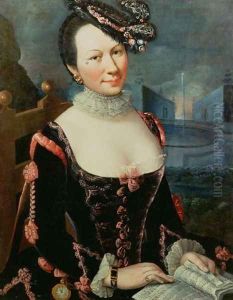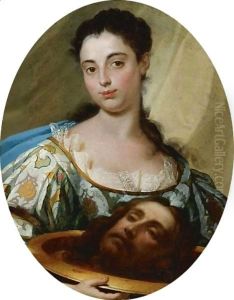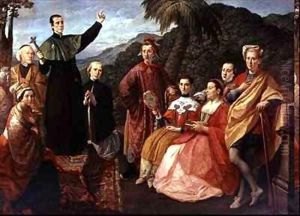Marco Benefiale Paintings
Marco Benefiale was an Italian painter born in 1684, known for his contributions to the Baroque movement, which was characterized by its dramatic use of color, light, and shadow to create a sense of motion and emotion in art. Operating primarily in Rome, Benefiale's career spanned a significant part of the 18th century, a period that witnessed the transition from the grandeur of Baroque to the more intricate and decorative Rococo style. Despite this stylistic shift in the art world, Benefiale remained deeply rooted in the Baroque tradition, often focusing on religious and mythological themes that were common among artists of his time.
Benefiale's upbringing and early life are not thoroughly documented, but it is known that he was deeply influenced by the works of the great masters of the Baroque era, such as Caravaggio, whose use of chiaroscuro (the contrast of light and shadow) deeply impacted his artistic development. Unlike many of his contemporaries, Benefiale did not travel extensively across Europe, choosing instead to base his career in Rome. This decision allowed him to immerse himself in the city's rich artistic tradition and to contribute significantly to the decoration of its many churches and palaces.
Throughout his career, Marco Benefiale was celebrated for his ability to convey deep spiritual themes with emotional intensity. His works were often characterized by their vivid realism, attention to detail, and the dynamic interplay of light and shadow. Benefiale's contributions to the art world were not limited to his paintings; he was also involved in the broader cultural and artistic discussions of his time, participating in the intellectual circles that were central to Rome's cultural life.
Benefiale's legacy, while perhaps not as widely recognized as some of his contemporaries, remains significant in the study of 18th-century Italian art. His commitment to the Baroque style, even as the art world began to embrace Rococo, demonstrates his dedication to the emotional and dramatic potential of painting. Marco Benefiale passed away in 1764, leaving behind a body of work that continues to be appreciated for its depth, craftsmanship, and beauty. His paintings are preserved in various museums and collections, serving as a testament to the enduring appeal of the Baroque tradition in Italian art.


